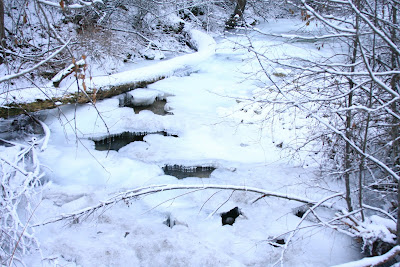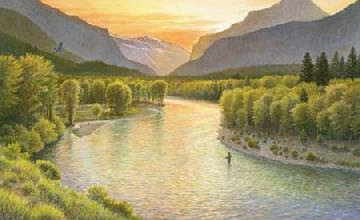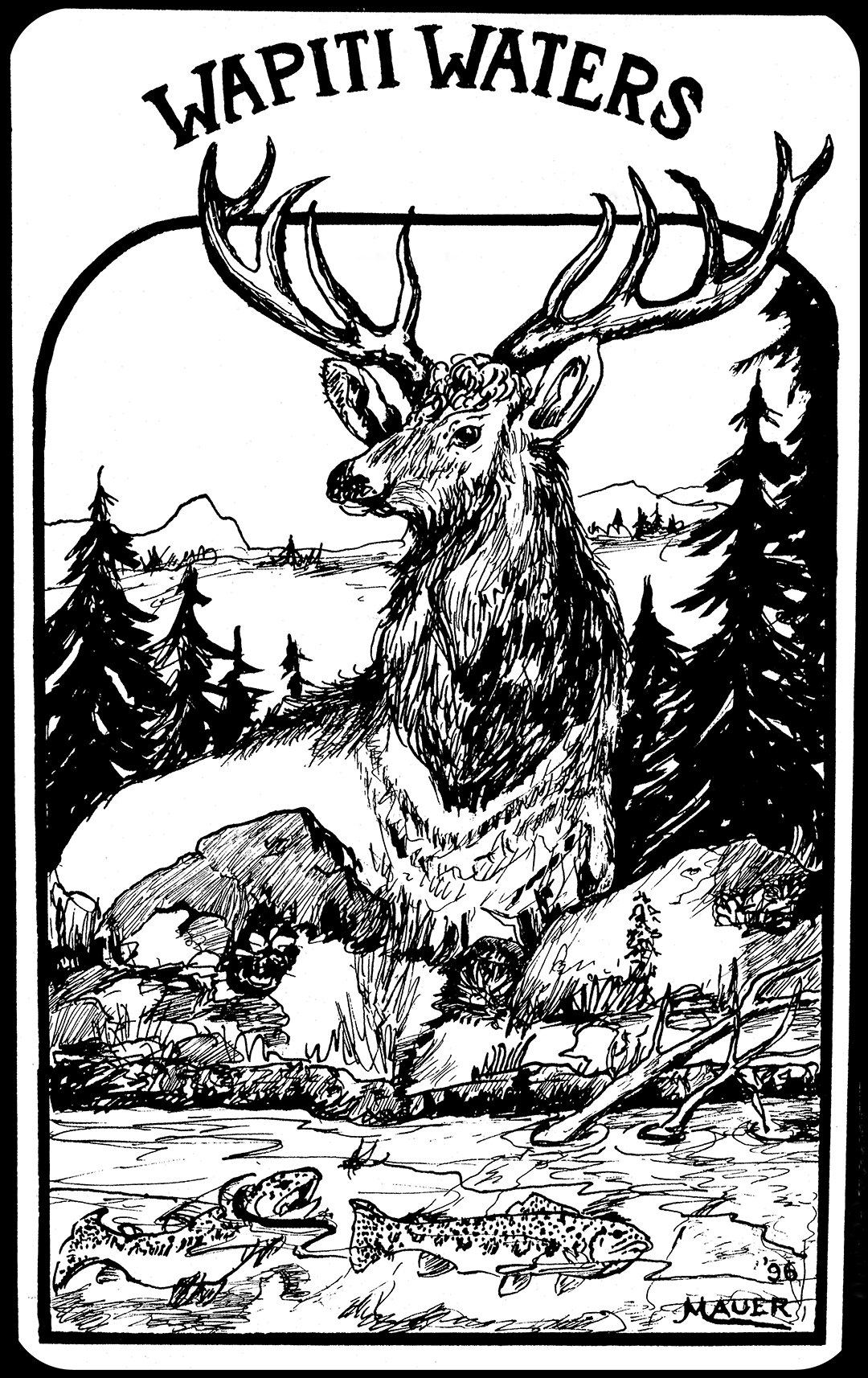
by Merle Ann Loman | Feb 18, 2009 | Conservation/benefits/organizations
 Posted from an email by Clark Fork Coalition:
Posted from an email by Clark Fork Coalition:
Support the Big Sky Rivers Act TODAY! Join us Friday for River Lobby Day.
Your river needs you this week.
Please voice your support for HB 455, the “Big Sky Rivers Act,” up THIS THURSDAY, February 19 in the House Local Government Committee.
1) Leave a message for your Representative at 406-444-4800
2) Email a brief message of support directly to your Representative
3) Send your support to the entire House Local Government Committee: send emails to kbutcher@mt.gov
Join us this Friday, Feb 20th, at the Capitol!
8:30 am – Vans leave from CFC office in Missoula.
10:30 am – Meet at the Rotunda and tour the Capitol building.
11:00 am – “Lobbying and Legislature Basics” with Brianna Randall of the Clark Fork Coalition, Sarah Cobler of Montana Conservation Voters, and other policy mentors.
12:00 pm – Lunch with selected Representatives and Senators (food provided).
1:00 pm – View House and Senate floor sessions from the gallery.
2:00 pm – Join a mentor to attend committee hearings or lobby your elected officals on the Coalition’s priority bills.
4:30 pm – Leave Capitol and swing by the Blackfoot River Brewing Company to meet and greet other Coalition members and river supporters.
Please RSVP by Weds 2/18 to attend or carpool: info@clarkfork.org or 542-0539 x200.

by Merle Ann Loman | Jan 24, 2009 | Conservation/benefits/organizations, ii Summer
 Trout Unlimited On the Rise
Trout Unlimited On the Rise
Clark Fork River: Missoula, MT
Sat, Jan 24, 2:00 PM Run Time: 30 min.
OUTDR 153 on Dish Network
Genre: Sports, Sports non-event
First Aired: Jan 23, 2009
Topic: Fishing the Clark Fork RiverFor me, the jury is out on this new TU TV show, but in this episode, my favorite outfitter is fishing with Host Frank Smethurst. Check it out.
One of our clients saw it and emailed, “Hey Jack, I saw you this morning on Trout Unlimited TV fishing the Clark Fork. In early July and I will try to fish a day or two with you. The Clark Fork looked like a lot of fun. Hope all is well.”


by Merle Ann Loman | Dec 23, 2008 | Conservation/benefits/organizations, iiii Winter/Snow
Click the photo for a larger view in a new window.

This is my attempt to provide a little more information about trout behavior (Part I); and ice development and anchor ice (Part II). In my research, I found only few studies, and I am pleased to reference for Part I a study that was done here in the Bitterroot.
I ran this article by Chris Clancy, our local Montana Fish, Wildlife and Parks fisheries biologist and one of the authors of the Bitterroot study. His input:
I think the take home message is that some sort of overhead cover and a variety of habitats are helpful to trout in the winter. Streams that are simplified by overgrazing or channelization lose the diversity of habitats. Deep pools are particularly important. I expect the winter movement is not really something they want to do but more likely they have to as the location they are in has changed or somehow become inadequate for their needs, so they find another. Generally in a healthy stream, the mortality during winter is much higher than summer.
Part I – Trout
Trout obviously prefer to expend as little energy as possible in the winter. In the study referenced in this section, bull trout and cutthroat trout made extensive downstream overwintering movements with declining temperature in the fall, yet for the remainder of the study (until late February), most fish remained stationary. Some fish made additional downstream movements in winter during a low-temperature period marked by anchor ice formation. Winter movement was more extensive in the mid elevation stream where frequent freezing and thawing led to variable surface ice cover and frequent supercooling. Habitat use of both species varied with availability; beaver ponds and pools with large woody debris were preferred in one stream, and pools with boulders were preferred in the other. Trout overwintered in beaver ponds in large, mixed aggregations. Both species decreased use of submerged cover following the formation of surface ice.
Their results indicate that (1) continued activity by trout during winter is common in streams with dynamic ice conditions and (2) complex mixes of habitat are needed to provide suitable fall and winter habitat for these species.
My note: It is my understanding the “complex mixes of habitat” produce more static ice conditions and are most often streams with natural vegetation and “undisturbed” i.e. not altered by man (mostly construction) or overgrazing. Open streams, where there is little or no cover and vegetation, produce more dynamic ice conditions. Other studies suggest that even though trout may be in streams with dynamic ice conditions, their preference is for more static or stable conditions – where thermal cover might help keep the surface ice from freezing and thawing.
References for Part I
THE ROLE OF STREAM ICE ON FALL AND WINTER MOVEMENTS AND HABITAT USE BY BULL TROUT AND CUTTHROAT TROUT IN MONTANA HEADWATER STREAMS, Jacober, M. J., McMahon, T. E., Thurow, R. F., Clancy, C. G., Abstract, Page 1 Click here for their paper published by the American Fisheries Society 1998
Part II – Ice
Traditionally, habitat variables have been related to stream flow distribution, structure, cover, temperature, and water quality. Winter and ice formation will influence these variables.
As winter approaches and temperatures lower, the water cools. As it reaches the freezing point, border ice begins to form along the river margins and around obstacles and skim or surface ice forms in low flow velocity areas.
In low gradient areas static ice formation occurs and surface ice is established. Due to increased resistance by the ice, water depth increases and velocities are reduced. In low gradient rivers and river reaches static ice formation occurs enabling stable conditions. Surface ice decreases the amount of light and creates cover against predation and severe hydraulic conditions allowing fish in these areas to preserve energy more efficiently.
Ice production in small, steep rivers is dominated by dynamic ice formation with potential melting and freezing throughout the entire winter. In high gradient sections, such as rapids and riffles, dynamic ice formation dominates. Dynamic ice formation starts when water temperature drops below zero degrees. Here, the water temperature becomes super cooled and tiny ice crystals form, known as frazil ice, or floating ice plates (ice that forms as small plates drifting in rapidly flowing water where it is too turbulent for pack ice to form). In locations with sufficient turbulence, frazil ice is transported towards the riverbed where it adheres and forms anchor ice. Normally, anchor ice formation develops during night and pauses during day.
Anchor ice formation can be extensive and may cover large areas. It may be distinguished between two types according to its formation process: Type I: less dense and forming on top of the substrata and Type II: Dense and forming between the substrata, filling all the small openings and spaces. During the events of anchor ice formation, flow conditions may be substantially altered. Type II anchor ice will potentially exclude important fish habitat. Fish may experience entrapment or be forced to relocate into other suitable areas, preferably surface ice covered stream margins.
In small, steep rivers, extensive growth of anchor ice may occur and lead to the formation of anchor ice dams. These anchor ice dams are normally developed in transition zones between riffle and pool sections and in locations with emergent, large boulders, and can slow further surface ice growth. High mortality of trout has been observed during the formation and breakup of anchor ice dams due to stranding, ice collapse, and physical abrasion from suspended ice particles.
References for Part II
ANCHOR ICE FORMATION AND HABITAT CHOICE OF ATLANTIC SALMON (SALMO SALAR L.)PARR IN STEEP STREAMS, Stickler, M. (M.Sc.), submitted to the Norwegian University of Science and Technology – Click here for the online paper
ICE IN THE ENVIRONMENT, Stickler, M., click here for the online paper

by Merle Ann Loman | Dec 7, 2008 | Conservation/benefits/organizations
Here is a great idea for Christmas!

World renown artist, Monte Dolack, painted this as a limited edition for the Bitter Root Chapter of Trout Unlimited, Hamilton, Montana.
- Prints #2-5 $500
- Prints #43-225 $175
100% of the proceeds for Prints 1-225 and the Publisher Proofs go directlyto BRTU Education and Habitat Projects.
View Print and learn about the artist at Monte Dolack’s website http://www.montedolack.com/.
You can purchase a print at Monte’s site or by contacting BRTU President, Geoff Fitzgerald at fitzes91@yahoo.com. More BRTU contact information is available on the BRTU blog.
More questions? Contact us at wapiti@wapiti-waters.com or 800-254-5311.
This is a great cause and a great connection to the Bitterroot and Montana. BRTU does amazing work with youngsters and landowners in education and rehab of our rivers and streams.

by Merle Ann Loman | Nov 30, 2008 | Conservation/benefits/organizations

Click here for the
Western Native Bull Trout website showing a bull trout location map and an assessment document.
Once again, our friend and New Heathens band member, Nate Schweber in New York (but from Missoula) has impressed me with his social blogging.
An excerpt of Nate’s blog: A Canadian mining company wants to dig up coal at the headwaters of the North Fork of the Flathead River, which forms the western boundary of Glacier National Park. I go fishing there every summer. Boooo! Read on for his “double boo” and “triple boo.” Please visit his blog about Canadian Coal vs Bull Trout.
Click here for a Missoulian newspaper story,
Canada: Mine planned atop habitat for bull trout By MICHAEL JAMISON of the Missoulian.
Nate found the story and has the link on his website (thank you Nate).

 Posted from an email by Clark Fork Coalition:
Posted from an email by Clark Fork Coalition:


